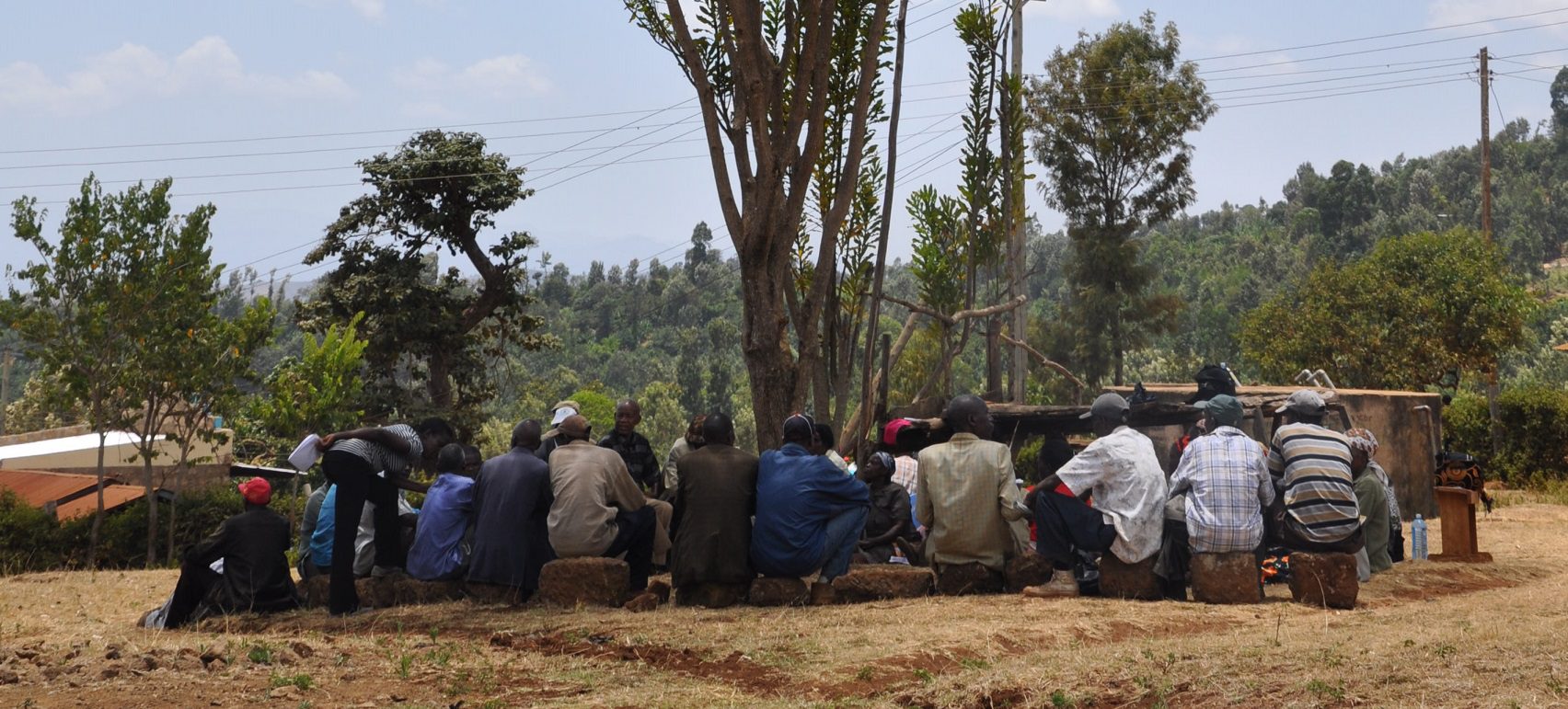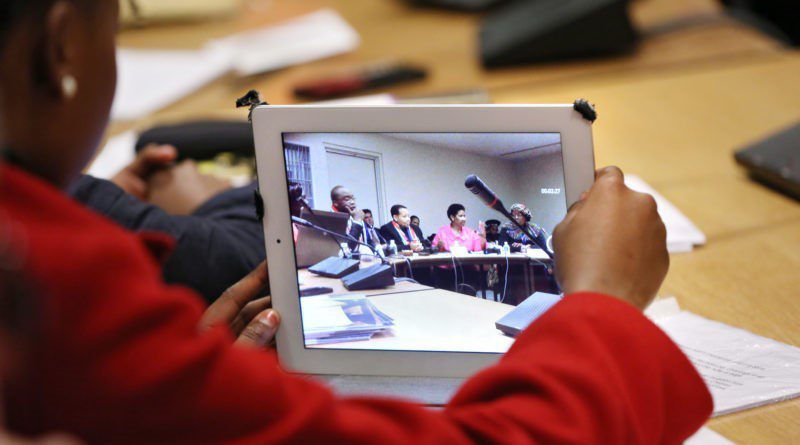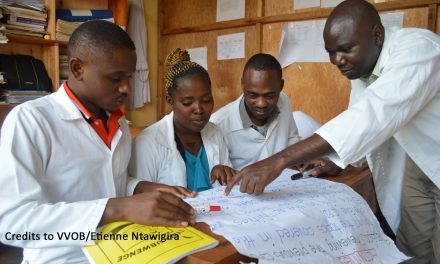This page by UNHCR pulls together resources, considerations & guidance for continued education during the COVID-19 global pandemic. It was first published on 6 April 2020 and is available on the UNHCR website.
With more than 1.5 billion children and youth impacted by COVID-19 related school closures, there has been a push to explore online and digital resources to promote continuity via virtual learning.
UNHCR has contributed to these efforts by identifying resources that can support virtual learning, but we also recognize the limitations of this approach. There are thousands of resources online, and sorting through these materials can exhaust even the most talented and informed teachers.
UNHCR also acknowledges that digital resources are most effective when aligned to a curriculum and locally contextualized.

Mary, an 18-year-old refugee from South Sudan, poses for a photograph in September 2019 at the girls’ boarding school where she studies in Kakuma refugee camp in Kenya. ©UNHCR/Hannah Maule-ffinch
Another challenge is that most of the refugee and host communities have limited access to hardware devices, and connectivity can be prohibitively expensive. Lack of access also limits acquisition/development of the digital literacy and skills required by teachers, students, and their communities to make the most of the available learning resources.
So how to address these issues?
For several years, UNHCR has invested in Connected Education as part of our education strategy. This work has largely recognized the importance of learning as a social activity, and thus concentrated on classroom interventions. While recognizing that virtual learning requires a different approach, there are some elements to our holistic approach that remain relevant. These include a focus on:
- Identifying available resources with open licensing, as well as tools for virtual learning. We continue to work with partners, including the EdTech Hub, to update the list of available digital resources and tools for students and teachers to use.
- Aligning resources to national curricula. We’ve been collaborating with actors like Learning Equality to map and align open digital resources to different national curricula, through their free, open-source platform called Kolibri. Successful efforts are underway to align digital material in Jordan, Kenya and Uganda. In addition, we’ve been working to automate part of this process through a Google.org grant and community design sprints.
- Building digital literacy among students and parents. Digital skills are vital to actively contributing to today’s world. These skills suddenly become a necessity when issues like COVID emerge and digital learning becomes a requirement. To this end, we’ve been working with actors such as Microsoft to help build digital skills for refugees and host communities.
- Assisting educators with instructional design. Educators also need support in knowing how best to support digital learning. We’ve been working with governments to equip educators with skills for effective Connected Education, through initiatives like IDEL, and through partners like the Carey Institute for Global Good, which support teacher training for virtual learning.
- Investing in digital infrastructure. Access to digital infrastructure – including phones, laptops and internet connectivity – is a matter of equity when it comes to virtual learning. In order to ensure that all learners have access (not just those who can afford it), UNHCR has been collaborating with organizations like ECW and HP and Vodafone Foundation to equip learning environments with digital infrastructure, and through the Instant Network Schools (INS) programme we’re also ensuring these places have access to free connectivity. With the threat of COVID-19, we recognize that hardware and infrastructure might need to be used differently, and in most contexts, available resources will not be sufficient to meet the needs. Here is some initial guidance on how to leverage existing available resources to support continuous learning and on how to ensure broader digital inclusion.
- Providing guidance on the use of Connected Education. We’ve learned a lot on how to use digital resources and virtual learning approaches to effectively support learning. Our collaboration with the Connected Learning in Crisis Consortium (CLCC) has helped to outline promising practices for tertiary approaches. Other tips are included below but are also available through the resource page on the consortium’s website.
In the context of COVID-19, it is important to recognize that we need to move past simply sharing digital tools, and have meaningful discussions on how to leverage collective knowledge and good practices to create an effective response. To this end, we’ve outlined some helpful considerations, useful readings, toolkits, teacher training webinars and additional links to partner websites that are worth consultation.
But we need your help.
As COVID-19 is attracting a national response, the areas below reflect activities that are likely to be co-ordinated by a broader set of actors. Here are different ways that you can support our work to ensure in times of crises that everyone is able to benefit from connected and virtual learning opportunities:
- Help in digitizing national curricula – This can benefit parents, teachers and students alike, while also helping to develop automated tools to speed up the alignment process. Ministries of Education should commit to, and be supported in, posting digital versions of their curricula online for public access.
- Assist in aligning digital resources to national curricula – Ministries, educators and learning resource providers can all play a role in helping to map and align digital resources to meet the needs of different curricula.
- Advocate for digital resource providers to indicate the licensing agreement on any material available – Licensing should always be part of the conversation from the start. While emergency efforts to make proprietary digital materials available for limited periods is a start, making learning resources (or at least some of them) openly licensed indefinitely has exponentially greater impact. It will allow marginalized communities to have access to these much needed resources throughout their entire educational careers. Simply put, if learning resources are not clearly licensed, educators don’t know whether, or how, they can use it.
- Ensure interoperability of learning resources – Materials that are specifically designed for a particular platform or tool, and can’t be used across platforms, have limited value in low-resource contexts, particularly in places where offline functionality is vital. As resources are being selected, do flag this as a consideration.
- Consider the hidden costs – When selecting materials and tools for use in digital learning, consider the hidden fees and data privacy issues that might be placed on educators, students, and communities when selecting certain tools. Ensure these considerations are part of the conversation with content creators when creating materials and with educators and learners in the use of different learning materials.
- Lastly, help us do more – write to hqeduc@unhcr.org if you are interested in helping to digitize curriculum or assist our alignment efforts.
Download the UNHCR list of digital learning resources
Also here are some additional useful websites & readings
- Global Education Coalition – #LearningNeverStops
- GPE – School, interrupted: 4 options for distance education to continue teaching during COVID-19
- UNESCO – 10 Recommendations for planning distance learning solutions
- WB – How are countries addressing the Covid-19 challenges in education? A snapshot of policy measures
- GPE – The impact of COVID-19 and other infectious disease outbreaks on international students
- Learning Equality – Supporting Continued Learning during COVID-19
- NY Times – Coronavius Exposes the Digital Divide
- UNESCO – Coronavirus: could education systems have been better prepared?
Partners Curated Tools Pages:
- GEC – Global Education Cluster COVID 19 Resource Page
- mED Alliance – ICT4E Covid-19 Resource page
- INEE – COVID-19 Distance Learning Collection
- EdTech Hub – Open educational resources in response to Coronavirus
- UNESCO – Distance learning solutions to mitigate COVID-19 school closures
- UNICEF – Guidance to protect children and support safe school operations
- Global Business Coalition for Education – COVID Response
- Profuturo – Digital Learning Resources
- USAID – Mobiles for Education Resource Page
- Google – Teach from Home; Google enabling distance learning
- Education Above All – Bank of Education Resources
- Education Above All – EAA PROVIDES HOME LEARNING SUPPORT FOR PARENTS AND GUARDIANS
- Inter-agency Network for Education in Emergencies – ICT Inventory https://ict.ineesite.org/
- Amazing Education Resources
- Instructional Design for eLearning (IDEL) – Connected Learning Resource Page
- John Hopkins University – Teaching during Campus Closures
- Fordham University – Course Continuity, Creating Multimedia, and Managing Discussions
- Carey Institute for Global Good, Center for Learning in Practice – Moving Learning Online
- Harvard University Graduate School of Education – Lesson Plan Database
- International Society for Technology in Education – Learning Keeps Going Resources
- Sesame Workshop Caring for Each Other




